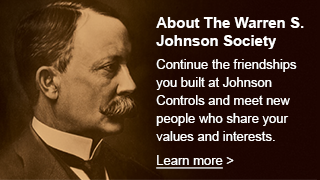Motivation in Retirement
February 16, 2019
It’s the middle of winter in Wisconsin, and it’s been very cold. This time of year my morning exercise routine goes indoors, weights and treadmill accompanied by YouTube Videos or TED Talks. I have a theme each year for these, gardening, vintage radio restoration, and WordPress are themes from past years. This year’s theme includes topics on innovation, creativity, and work.
How about that, work! This is tied to my activities as a mentor for local startup companies. Something I really enjoy. One of the startup companies this past year is involved with workplace analytics applied to workspaces for high performance innovative teams. This has come a long way since ‘personal environmental control’ was included in the early LEED standards. Now you can even set up your workstation to alert you that you’ve been sitting, staring at the computer too long, time to get up and move around.
Yesterday I watched a video by Daniel Pink called “The Puzzle of Motivation.” His case was that business practice and business science are at odds regarding effective motivation in the workplace. Remember the bonus structure, annual reviews, and ‘cutting the fat’? Those are extrinsic practices for motivation, the carrot and stick. Pink’s case is that science, actual case studies, reveal that intrinsic practices are far more effective and satisfying to both worker and employer. He describes intrinsic motivators in three categories:
- Autonomy: the worker’s basic human desire to have some control over the work they do and how they do it
- Mastery: involves the attraction to work that allows the worker to develop skills and experience the satisfaction of achieving high levels of performance
- Purpose: involves another basic human desire, that is to be involved in something greater than yourself, work with a greater purpose.
I saw this when I was a Branch Sales Manager. The strength of customer relationships were the real source of financial results. And these were created by sales people and ops teams who cared enough for their customers to get them the right solution at a good price. The financial motivation for installation crews was to get it done and get off the job — they stayed until it worked properly. I believe that care, and the fact that we were the last contractor on the job, fed customer confidence in us versus mechanical contractors in performance contracting. Those jobs had major mechanical work, but our customers knew from experience that our people stayed until the job was right. The relationship paid off big time for both of us.
I think the model also fits very well in retirement. We generally have far more choice in what we do — autonomy is a retirement benefit. And, it’s interesting to hear from our members how they have chosen activities for their ‘retirement’ that involve skilled work, technical and services, with a greater purpose.
For me, startup mentoring and editing WSJSociety.com offer challenges for both ‘mastery’ and ‘purpose;’ and, I get to work with some really interesting people to boot. Vintage radio repair and gardening may not be so strong on the ‘purpose’ side, but Paula and I get to eat the fruits of the garden and share it with our neighbors.
Yes, I agree with Pink, a framework for activities in retirement based on autonomy, mastery, and purpose works for me.
Checkout the video. What do you think?
Looking forward to Spring,
Jude Anders, Editor

